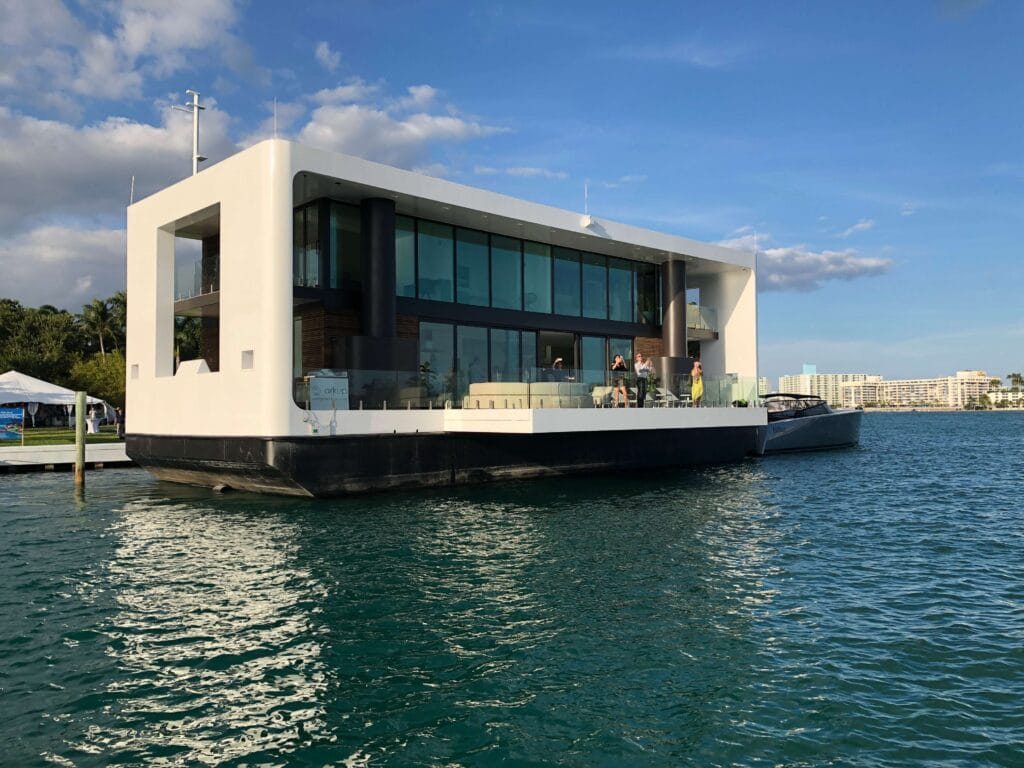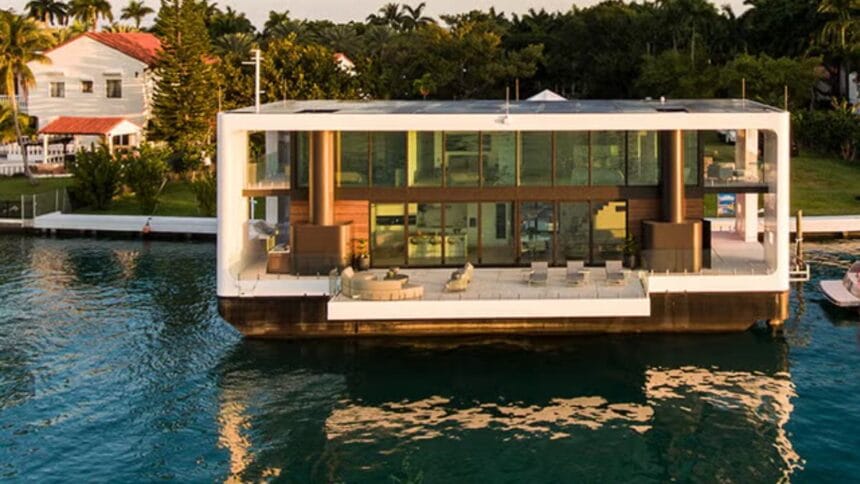As the world searches for sustainable solutions to the rising challenges of climate change, energy scarcity, and urban crowding, one innovation is gaining remarkable attention, the solar power floating home. These futuristic houses combine renewable energy with adaptable architecture, offering a self-sufficient lifestyle without sacrificing comfort or design.
Whether you’re dreaming of living on water or simply interested in eco-technology, the idea of a floating solar-powered home might be the perfect blend of innovation and necessity. This article explores the benefits, design principles, technologies, and future of solar-powered floating homes in an engaging and practical way.

What Is a Solar Power Floating Home?
A solar power floating home is exactly what it sounds like—a house built on water that is powered entirely or mostly by solar energy. These homes float on lakes, rivers, or even protected coastal waters and are designed to be energy-efficient, self-reliant, and environmentally friendly.
Unlike traditional homes or houseboats, solar-powered floating homes are engineered to be sustainable in both their construction and energy usage. They’re equipped with solar panels, energy storage systems, water purification units, and sometimes even vertical gardens or composting systems.
Why Are People Choosing Floating Solar Homes?
Several factors are driving the demand for floating homes powered by solar energy:
- Climate Change: Rising sea levels are threatening coastal properties. Floating homes adapt to changing water levels, making them a safer long-term investment.
- Energy Independence: By using solar energy and battery systems, these homes don’t rely on the grid, giving homeowners freedom from rising electricity bills.
- Sustainable Living: Solar power combined with eco-friendly materials makes these homes an excellent option for those who want a low-carbon lifestyle.
- Urban Overcrowding: With cities running out of space, floating homes provide a new direction—literally—by expanding living areas onto water bodies.
Key Components of a Solar Power Floating Home
Let’s break down the essential features that make a solar-powered floating home truly off-grid and efficient:
1. Solar Panels
Mounted on the roof or a floating dock, solar panels harness sunlight to generate clean electricity. Depending on the size of the home and location, most systems are capable of generating enough power for lighting, appliances, and even heating/cooling.
2. Battery Storage
To ensure power availability during the night or cloudy days, most homes use lithium-ion battery banks (like Tesla Powerwalls or similar systems) to store excess solar energy.
3. Floating Foundation
The base of the home is made from buoyant materials such as concrete pontoons, recycled plastics, or steel drums, engineered to support the home’s weight and remain stable in water.
4. Water Management System
Floating homes often collect and purify rainwater for drinking and use greywater recycling systems to minimize waste. Advanced models may also include desalination units for ocean-based homes.
5. Waste Management
Many floating homes use composting toilets and bio-digesters to break down waste, reducing the environmental impact and eliminating the need for sewage connections.
Real-World Examples of Solar-Powered Floating Homes
1. Schoonschip (Amsterdam, Netherlands)
One of Europe’s most famous floating communities, Schoonschip features 46 solar-powered homes built on a canal. Each home includes rooftop solar, smart energy systems, and a communal heat exchange network.
2. Arkup Livable Yachts (USA)
These luxury floating homes are more like floating villas. Fully solar-powered with rainwater harvesting and hydraulic anchors, they’re a high-end example of sustainable aquatic living.
3. The Floatwing (Portugal)
A modular floating house developed by Friday SA, the Floatwing is self-sufficient for up to a week, runs on solar energy, and includes a wastewater treatment system.
Advantages of a Solar Power Floating Home
Owning a solar-powered floating home isn’t just trendy—it comes with real-life benefits:
- Zero Energy Bills: Say goodbye to monthly utility charges.
- Mobility: Some floating homes are designed to be relocatable.
- Eco-Friendly Construction: Built with sustainable, recycled, or local materials.
- Adaptable: These homes naturally adjust to changing tides and water levels.
- Noise and Air Pollution Reduction: No gas generators or city grid noise.
Challenges to Consider
While appealing, floating homes also face challenges:
- Initial Cost: Building on water and integrating solar tech can be more expensive upfront.
- Permits and Regulations: Water zoning, mooring laws, and environmental approvals can complicate construction.
- Maintenance: Floating structures are exposed to elements and need regular upkeep.
- Limited Space: Space-saving designs are crucial as square footage is usually compact.
But many of these challenges are manageable with proper planning and innovative design.
Tips for Building or Buying a Solar Power Floating Home
Thinking of joining the movement? Here’s what to keep in mind:
- Location Matters
Choose a calm, regulated body of water where floating structures are permitted. - Design for Efficiency
Work with architects experienced in marine and solar technology to ensure your home performs well year-round. - Plan for Storage
Solar systems work best with high-capacity batteries and energy-efficient appliances. - Invest in Insulation
Proper insulation reduces energy needs for heating and cooling. - Use Lightweight Materials
Helps reduce stress on the floating platform and improves buoyancy. - Maintenance Access
Design with easy access to solar panels, water filters, and waste systems for regular maintenance.
The Future of Floating Solar Homes
As smart cities evolve and people look for more sustainable ways to live, solar-powered floating homes will likely play a crucial role. Here are some trends on the horizon:
- Floating Neighborhoods: Complete communities with floating gardens, schools, and stores.
- Hybrid Power Systems: Combining solar with wind and tidal energy for higher efficiency.
- AI Energy Management: Smart systems that auto-regulate energy consumption based on weather and usage patterns.
- Disaster-Resistant Design: Homes that can survive floods, hurricanes, and extreme weather.
These innovations not only make floating homes more feasible but also position them as a climate-resilient solution.
Conclusion
A solar power floating home is more than just a futuristic dream—it’s a practical, eco-conscious lifestyle choice for those who want energy freedom, adaptability, and a smaller environmental footprint. From quiet lakes to bustling urban canals, these homes offer a peaceful, off-grid lifestyle powered by the sun and guided by innovation.
As demand for sustainable housing rises, the idea of living in a floating, solar-powered sanctuary is no longer a niche trend—it’s a glimpse into the future of living on Earth (and perhaps beyond).
Read More: The Future of Smart Speed Bump
Read More: High-Performance Concrete Build Business Case Value
